Fortunia: features, varieties, how does it differ from petunia?

A hybrid of petunia, called fortunia, is especially loved by many flower growers for its beauty and ease of care. Fortunias are annual plants that bloom luxuriantly during the warmer months. This plant is prized for its ability to be planted in hanging pots, as it has rather long shoots. The numerous flowers adorning a small bush will surely attract the glances of passers-by.
Peculiarities
Fortunia is an abundantly flowering plant with long shoots, resistant to changes in weather conditions. This plant is a hybrid of the well-known petunia., there is practically no difference between them. Fortunia, like petunia, perfectly tolerates prolonged rains and strong winds and is not afraid of climatic changes. There are practically no differences in appearance either.


Most often, fortune is used as an ampelous plant, with the help of which balconies, loggias and racks are decorated. It is in perfect harmony with many other cultures that are often used in landscape design. If fortunia is planted in a hanging planter, then its branches will be able to fall down to 1m, and all of them will be completely covered with bright flowers. At the same time, the height of the entire bush will not exceed 15–20 cm. When planting a plant on a flower bed, you can create a fabulous flower carpet covering about 1.5 m 2 of the area.
Varieties
Fortunia ampelnaya is represented by a variety of varieties that can be easily grown independently, without having any special skills. Let's consider the most relevant ones.
- Fortunia Red. She has flowers of a bright red hue with a dark neck.
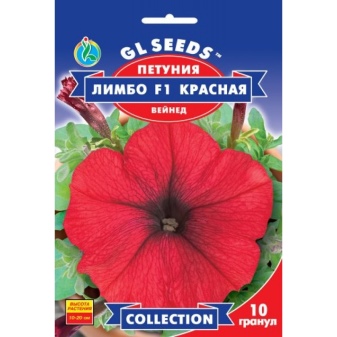

- We also recommend paying attention to fortune. "La Gioconda is red", which belongs to the Italian series of ampel petunias. This variety is grown only in seedlings.

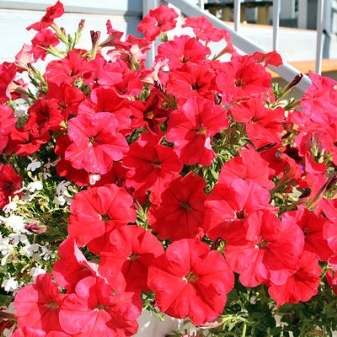
- Italian hybrid varieties include "La Gioconda Sea Symphony F1"... With its help, you can form a luxurious cascade of greenery and many large flowers of white and purple shades.
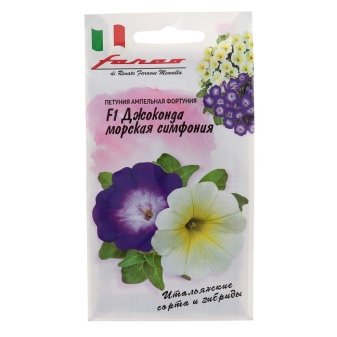

- With the help of fortune "La Gioconda white" you can create a huge pillow of bright white flowers. Its strong stems will keep the shape of the bush throughout the season.


Planting and further care
Quite rarely, fortune is propagated by cuttings, although cuttings can be purchased from professional gardeners. They take root quickly, and you do not need to expect seedlings for a long time. However, the most common cultivation method is from seed.

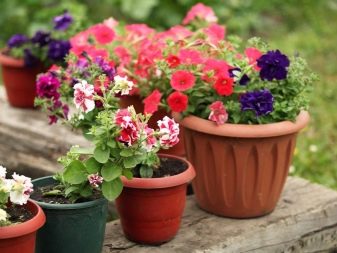
It is best to grow fortune from purchased material, and not from self-collected. Of course, young plants can be obtained from self-collected seeds, but their flowers will already be much smaller, and they will also not be velvety. This is due to the degeneration of some properties of the hybrid after the season.


Sowing fortune is most often carried out in late February or March, sometimes in April. When sowing very early, young plants should be planted as early as May. If you do not plan to use additional lighting, then it is best not to plant fortune before March.


- It is necessary to pour the substrate into the prepared container (these can be cups or a special box) and moisten it a little. You can purchase it at a gardening store.
- Then spread the fortune seeds over the substrate. Like petunia seeds, you do not need to sprinkle them with a substrate.
- For an accelerated ascent, they can be covered with glass to obtain a greenhouse effect.
Usually, seedlings appear after a week, sometimes two, depending on the temperature in the room. The optimum is + 18– + 20 °, the same temperature is recommended for grown seedlings. Do not forget to moisten the seeds in the substrate with a spray bottle, and if they are under glass, then ventilate them daily.


After the first 2-3 leaves appear, the seedlings can be dived. And then, after some more time has passed, plant them in small pots, in which the plants will develop until they are planted in the ground. At this point, they are usually about 3 months old. In addition, it is very important to do this when you are sure that there will be no frost.
Fortunias are not very picky about the soil, but it's not bad if it is light and fertile. After planting in the ground, watering the plants should be moderate. During frequent rains, it should be cut to avoid overflowing the plants. For abundant flowering, it is recommended to feed them. Compound fertilizers should be used for this kind of annual flowers.

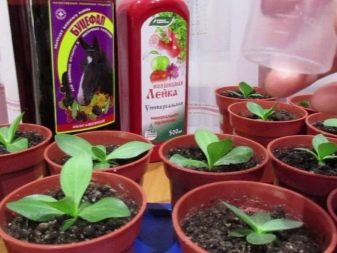
Fortunias are quite light-loving plants, but they should not be planted in places where there is too much scorching sun, otherwise the flowers will dry quickly. For constant and abundant flowering, old and dried inflorescences should always be removed on time: new ones will bloom faster.
Potential diseases and pests
Frequent watering, drought, an excessive abundance of the sun, an excess of nitrogen and a lack of nutrients can provoke diseases that are unpleasant for fortune.


- Powdery mildew. Caused by fungi that slowly kill the plant. Often the flowers of the plant with this disease become covered with white spots, and the leaves begin to curl and fall off over time. In this situation, transplantation and treatment with special means can help.
- Gray rot. Also caused by fungi. The disease can be identified by the characteristic gray spots on flowers and leaves. Fertilizers with nitrogen have a good effect. Potassium products are contraindicated. Diseased plants are difficult to save, so they are usually thrown away, and all the rest are treated with special means.
- Late blight. Manifested by rotting of the root of the stem. Treatment with "Ridomil" or "Profit" in the early stages of the disease can help.


Insecticides and infusions from herbs and wood ash will help save from all kinds of pests of fortune.
For information on how to properly plant fortune, see the next video.







































































































The comment was sent successfully.